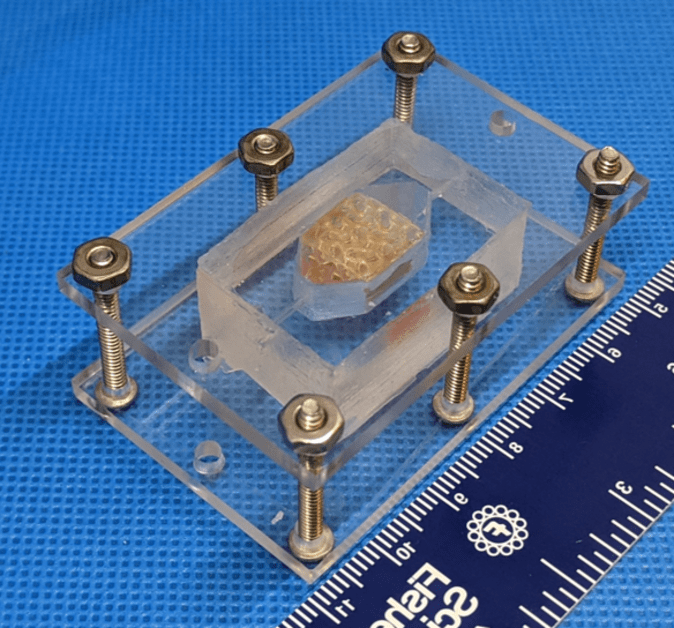Skinks think they’re just sooooo cool. Through no shortage of effort on our part, humans still lack the physiological capacity to regrow lost limbs and damaged organs. Well, we didn’t until this week, at least. A pair of research teams from Wake Forest University’s Institute for Regenerative Medicine have topped NASA’s long-running Vascular Tissue Challenge by 3D printing a biologically viable chunk of human liver.
The teams, respectively dubbed Winston and WFIRM, each managed to produce a centimeter-square hunk-o-meat capable of surviving and nominally operating for a span of 30 days, albeit using divergent methodologies. Yeah, granted, even NASA admits that both teams relied on similar “3D printing technologies to create gel-like molds, or scaffolds, with a network of channels designed to maintain sufficient oxygen and nutrient levels to keep the constructed tissues alive,” they differed on their printing designs and materials.

Wake Forest Institute for Regenerative Medicine
“I cannot overstate what an impressive accomplishment this is. When NASA started this challenge in 2016, we weren’t sure there would be a winner,” Jim Reuter, NASA associate administrator for space technology, said in a recent press statement. “It will be exceptional to hear about the first artificial organ transplant one day and think this novel NASA challenge might have played a small role in making it happen.”
Winston was declared the winner so that team not only receives $300,000 to further the tech’s development, the team will get to send its experiment up to the ISS for further testing — I mean, you gotta make sure that next lab-printed liver is sufficiently RAD resistant. The WFIRM team will receive $100,000, but no orbital expedition, to continue its research.
The medical procedures and products that this research potentially promises could well be revolutionary. Rather than rely on a network of volunteers, tomorrow’s organ transplant candidates may just have their replacement organs printed ahead of their transplant surgeries, virtually eliminating their chances of rejections and essentially guaranteeing a full genetic organ match every single time.
“The value of an artificial tissue depends entirely on how well it mimics what happens in the body,” Lynn Harper, challenge administrator at NASA’s Ames Research Center, added. “The requirements are precise and vary from organ to organ, making the task extremely exacting and complex. The research resulting from this NASA challenge represents a benchmark, a well-documented foundation to build the next advance upon.”
All products recommended by Engadget are selected by our editorial team, independent of our parent company. Some of our stories include affiliate links. If you buy something through one of these links, we may earn an affiliate commission.